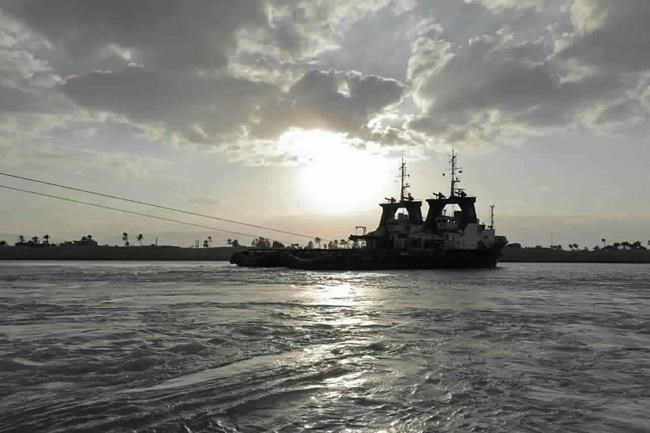The plight of a mammoth container ship stuck in Egypt’s Suez Canal has highlighted still more pressure points in global trade, a year after supply chains were disrupted by the coronavirus pandemic.
Salvage teams managed to free the Ever Given on Monday, but it was unclear when ship traffic through the critical trade gateway would return to normal. The Panama-flagged, Japanese-owned ship has been lodged in a single-lane stretch of the canal for nearly a week, holding up $9 billion each day in global trade.
Economists say the Ever Given’s disruption of shipping through the Suez Canal probably won’t have an impact on global trade for more than a few weeks, and is unlikely to derail global growth this year as more people around the world get COVID-19 vaccines and economies reopen.
But it's another wake-up call for companies that have set up their business to rely on supply chains with little room for error, said William Lee, chief economist at the Milken Institute.
“This is a warning about how vulnerable our supply chains are and how the just-in-time inventory techniques that have been so popular have to be rethought,” he said.
“The shortages and the supply chain shortages that cause assembly lines to shut down — that will have a greater impact,” Lee added.
Many countries got a harsh lesson in those realities last year when commerce was disrupted in myriad ways after new coronavirus outbreaks began in China, the world's factory floor.
Consumers everywhere soon found that ordering online was an adventure in the unknown, with many factories shut down and trade between Chinese provinces stalled. Obtaining supplies of medicines and vital personal protective equipment such as face masks and other medical supplies became challenging, and sometimes impossible.
The disruption from the Suez Canal blockage is less dramatic but not insignificant. The canal carries over 10% of global trade, including 7% of the world’s oil. Ships are already having to detour around the Cape of Good Hope in South Africa to avoid it.
That slows the arrival of containers at their destinations and delays when they can be emptied and then refilled with other goods bound somewhere else. That can drive up costs -- price increases that eventually reach consumers.
“Shipping prices are going to go up,” said Gary Hufbauer, nonresident senior fellow at the Peterson Institute for International Economics. “That will tighten up supply lines and mean shortages at the consumer level, and it will also mean somewhat higher prices for oil.”
The incident is another ripple worsening shortages of shipping containers in Asia, which means retailers may be late getting TVs, furniture, clothes, auto parts and many other goods that are shipped via containers.
The Suez Canal accounts for 30% of the world’s daily shipping container freight. That makes it the most important conduit for trade between Europe and Asia. Some 19,000 vessels passed through the canal last year, according to official figures.
Lee of the Milken Institute points to the semiconductor industry as an area especially vulnerable to disruptions from shipping delays. It is already plagued by shortages. Companies in Europe often get the components they need to make computer chips from suppliers in Asia.
“The shortage of semiconductors right now is so severe, that kind of delay in supply, even by a week or two, could also lengthen the delays in semiconductor production, which has stalled automobile and other electronics’ production,” Lee said.
The closure also affects oil and gas shipments. Much of the traffic involves transportation of crude oil from the Middle East to Europe and the U.S. It’s also become an important link for Russian oil to Asia.
The disruption from the canal blockage comes at tricky time for international trade and shipping, noted Fiona Boal, global head of commodities at S&P Dow Jones Indices.
“The cost of shipping goods from Asia to Europe hit a record high in recent months and global freight rates are already near three times the level of a year ago,” she said.
At the same time, oil prices may be kept in check by worries that demand for oil will weaken amid renewed pandemic lockdowns in Europe.
North and Latin America are likely to be less affected than Europe by the blockage in the Suez Canal, because much of the shipping container traffic that runs between the Americas and Asia moves through the Pacific to hubs like the Ports of Los Angeles and Long Beach, or crosses through the Panama Canal.
___
Associated Press writer Mari Yamaguchi contributed from Tokyo.
Alex Veiga, The Associated Press




